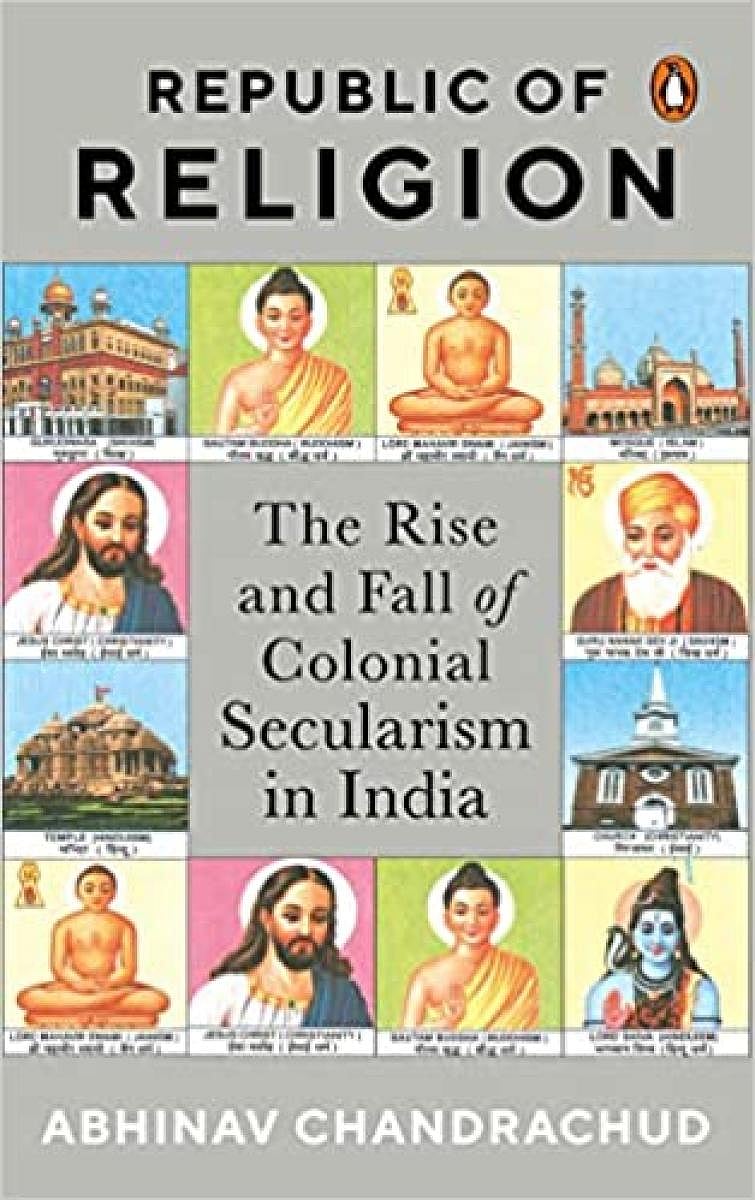
At a time when religion has got inextricably linked to the Indian political discourse, it is incumbent upon us to grasp the essence of secularism, a much-maligned word in recent times.
It was in 1976 that secularism was inserted in the Preamble of the Constitution through a statute amendment. This does not imply that India was not a secular republic till then. In fact, colonial rulers imposed secularism in India as a strategy to perpetuate their rule though Britain itself was not a secular nation. Since its origins were dubious, its collapse after India gained freedom should not come as a surprise. In free India, colonial secularism metamorphosed into a softer form.
In Republic of Religion: The rise and Fall of Colonial Secularism in India, Abhinav Chandrachud traces the origin and evolution of secularism during the British Raj and in independent India, throwing light on the uneasy relationship between the state and religion. Based on extensive research, the book cites the many contradictions in the practice of secularism right from the British era.
Chandrachud points out that the colonialists did not hesitate to use secularism as a device to pursue a policy of divide and rule even as they promised to protect religious minorities and practice non-interference in religious personal laws of Hindus and Muslims.
Holy cows
The book argues that the dawn of freedom saw secularism transform radically and that the nation is less secular today, belying earlier hopes. Another contention is that the fall of colonial secularism pre-dated the rise of Hindu Rights. The book begins with a discussion on the social and political implication of cow slaughter, a constant source of communal conflict in the colonial period.
Cow protectionists, spearheaded by President Rajendra Prasad, managed to get laws enacted to ban cow slaughter in several Congress-ruled states, much against the wishes of Jawaharlal Nehru. Nehru wrote that he felt greatly distressed by the Hindu revivalist feeling in the country as it was the exact replica of the narrow Muslim communalism, which he had tried to combat for so long.
Chandrachud, a lawyer from Bombay High Court, reasons that while colonial secularism tacitly encouraged Christian missionaries, free India discouraged conversion of Hindus. The introduction of separate electorate for Hindus and Muslims in 1909, ostensibly to protect the minorities, only helped to deepen the communal divide and sowed the seeds of separatism. But such protection did not exist for minorities in Britain. The resentment against separate electorate culminated in the Constitution scrapping the provision and abandoning the promise of reservation for religious minorities.
Uniform civil code
The East India Company, after coming to power, took over the administration of Hindu temples, but later transferred it to Indian trustees due to pressure from missionaries who objected to government entanglement in religions of Hinduism and Islam.
As soon as Indian leaders came to power in colonial legislatures, they abandoned the policy of non-interference in religious matters. Later, Supreme Court judgments facilitated government administration of places of worship.
While Britain had a uniform civil code, the colonial rulers largely kept away from the personal laws of Hindus and Muslims in India. Chandrachud compares this policy to the Roman Empire’s act of accommodating the religious laws and institutions of conquered territories to soften the opposition to foreign rule. He is surprised at the failure to usher in the uniform civil code.
Republic of Religion lists several instances of colonial rulers interfering in religious practices, which were repugnant to British notions of morality and justice. Ban on Sati, sacrifice of children and female infanticide was enforced in the face of opposition from conservatives. In 1817, the exemption given to Brahmins in Benares from receiving death penalty for murder was lifted.
The book offers a few glimpses of religious oaths in colonial courts; Hindu witnesses were sometimes asked to swear an oath by touching the head of a cow, the feet of a Brahmin or the Bhagvad Gita. There was also the Ganga Jal oath.
The book quotes extensively from the debates in the Constituent Assembly enlivened by the stalwarts of freedom struggle. The conflict between the conservative and liberal voices is nothing new, but this is a timely work offering valuable insights into the most hotly debated topic of our times.